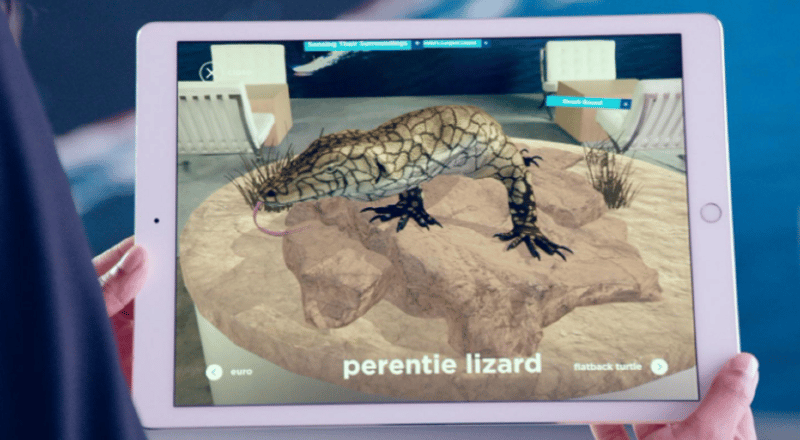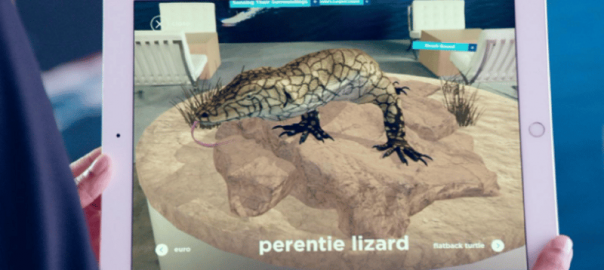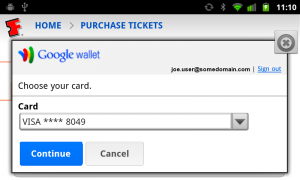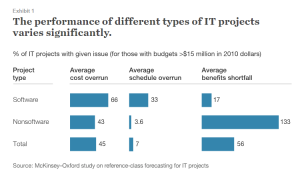Check out ten imaginative, immersive campaigns using extended reality (XR) to deliver impactful messaging.
This morning, during my communications campaign course at the University of Oregon, a student asked me why we research best practices and try to find examples of successful campaigns that are relevant to our client.
It was a great question.
My answer to her also sums up why you should care about this article. Finding examples of campaigns that can be evaluated based upon performance metrics can be a great way to reduce the risk and anxiety around trying innovative tactics. “Imitate until you can innovate” isn’t a bad mantra and there’s no shame in copying something that has worked.
A balance between leveraging previous success and pioneering new tactics
Of course, solely relying on previous campaign data to select your tactics can be an innovation killer — so it’s important to find a balance between leveraging previous campaign examples and pioneering new technology and tactics. You may not find examples on this list that are directly relevant to your work, however I hope you do find inspiration for innovative ways to engage and communicate with your audiences.
These ten examples were sourced from my XR (extended reality) students, XR colleagues, XR faculty at the University of Oregon’s Strategic Communications immersive media program and my own personal research and work. I hope they will help demonstrate effective uses of immersive technologies to engage with and connect users around the globe. If you’re looking for an active group of XR communicators, try joining my monthly XR Pub Crawl, where we explore online worlds and immersive technologies used for marketing and communications. Previous pub crawls can be found on Twitch.tv/lisapeyton and our upcoming event can be found on LinkedIn.
Click on the links below each example to immerse yourself in the experience.
1. Breonna’s Garden
Why I like it. The Breonna’s Garden app is a perfect example of the magic that can come of a mixed reality experience. The virtual, living memorial for Breonna Taylor leverages many different types of 3D assets, 2D video and augmented reality to allow users to pay tribute to and celebrate Breonna’s life. The app features video footage of Breonna and her family along with a 3D hologram of Breonna’s sister and a 3D rendering of Breonna herself.
The app brings to life a real-world garden and allows anyone, anywhere to join in the community, leave their own personal message and step into a wonderous, virtual flower garden in their own home.
Technology used. AR, 2D video, holograms, and 3D avatar.
Immerse yourselves. https://breonnasgarden.com/
2. Gatorade’s “Beat the Blitz”
Why I like it. “Beat the Blitz” uses high-end virtual reality to simulate what it feels like when a player gets dehydrated. It combines gamification, headset-based, immersive VR, and a 3D hologram of Peyton Manning to simulate getting dehydrated on the field and its impact on performance. Part educational tool and part VR game, Gatorade has done an outstanding job of building an experience not about the product but about their grand gift – hydration. They also crafted this experience with their target audience in-mind, recruiting an industry icon and using actual arm movement to simulate skills that players can relate to.
Technology used. Head-set VR, 3D virtual content, holograms
Immerse yourselves. https://store.steampowered.com/app/748420/Beat_the_Blitz/
3. 2022 Oscars 5G portal
Why I like it. Streaming behind-the-scenes footage from the Oscars is nothing new, but this year Verizon used some innovative targeting techniques to create serious FOMO among those not yet armed with 5G. The live-streaming, immersive red-carpet experience used Verizon 5G to provide users access to several different 360-degree cameras placed on or around the red carpet. Viewers could choose the camera view they were interested in and get a real-time, interactive view of all the action.
Verizon customers Googling the “Oscars” were strategically targeted to experience the AR portal through a web-based link, however if the link was shared with someone who didn’t have 5G – the experience wouldn’t provide both audio and video, creating a sense of missing out. Wanting to make sure you can keep up with the latest online conversations about celebrities might just be a good enough reason to upgrade your phone. Or so Verizon hopes is the case.
Technology used. Web-based AR, 360-degree live-streaming video
Immerse yourselves. https://blog.insta360.com/oscars-2022-360-live-streaming-from-the-red-carpet-backstage-more/
4. Pepsi’s The Weeknd Super Bowl half-time experience
Why I like it. Pepsi partnered with The Weeknd to create an easy-to-use, AR portal that could be accessed using a simple QR code — no download required. The seamless experience from soda can or digital signage to the AR portal made this experience a true touchdown. The portal allowed the user to enter an immersive world of exclusive The Weeknd video clips and experience their halftime performance via 360-degree video filmed from the front row. The interactivity and immersion of walking into an AR portal helped to improve upon the traditional 2D halftime show, in my opinion.
Technology used. Web-based AR, 360-degree video, QR code
Immerse yourselves. https://www.8thwall.com/aircards/pepsi-halftime
5. Intel’s Microsoft Build AR experience
Why I like it. One of the few B2B examples on my list, Microsoft and Intel partnered to create a fun and playful AR experience for their developer audience. I was fortunate enough to work on this project, full disclaimer, so I’m a bit biased but also had an insider’s view of the project from start to finish.
The biggest win for this campaign was piloting a mobile-based technology like AR for what has in the past been solely focused on desktop assets like blog posts, solution briefs and YouTube tutorials. These more traditional assets are extremely important when engaging with coders and developers who are focused on business solutions, however building awareness for these solutions doesn’t have to be ho-hum. Developers (in fact all of us!) love to be hands-on and prefer interactive experiences where they can help control and interact with the story. AR allows this type of interactivity and immersion along with helping to simulate complex, technical solutions.
Technology used. Web-based AR, 3D scalable content, QR code
Immerse yourselves. https://build.rpr.to/
6. Chevron
Why I like it. The second B2B campaign on this list may surprise you, as it was built by a more traditional brand — Chevron. Chevron has been at the forefront of using immersive technology to engage its high-stake audiences like policy makers, Chevron executives, partners, and customers. One of the brands first attempts at immersive storytelling was their VR experience simulating life onboard an oil rig. The high-end, headset enabled experience used 360-degree video, 3D content and spatial audio to recreate the working conditions of one of the most dangerous places on earth. The experience rolled out to Chevron rig employees’ friends and families, allowing them to see where their loved ones worked for the first time.
On the heels of this experience, Chevron crafted an AR campaign to be featured at the World Oil and Gas Conference in Washington, DC. Once again, they wanted to leverage innovative storytelling techniques to engage conference attendees in new ways. Instead of using VR, which would force attendees to wear a headset, they opted to use iPad Pros to display AR digital content. The experience featured their newest facility on an isolated island and told the story of conservation and innovation within the oil and gas industry. The experience also featured several rare wildlife species only found on the island, brought to life through animated AR, 3D content.

Technology used. VR, AR, 360-degree video, animated 3D content
Immerse yourselves. https://martech.org/chevron-storytelling-uses-purposeful-immersive-experiences-to-engage-stakeholders/
7. The New York Times’ AR mask experience
Why I like it. The Times is no stranger to immersive journalism, and they have been at the forefront of leveraging AR and VR for education. The mask experience does an excellent job of educating users on why masks work. By taking the viewer inside the fibers that create the masks materials and simulating the activities of Covid molecules, it becomes apparent how masks trap and block the virus.
This is a great example of taking a user someplace they could never go in real life and visualizing something they could never see with the naked eye.
Technology used. AR, 3D content
Immerse yourselves. https://www.nytimes.com/interactive/2020/10/30/science/wear-mask-covid-particles-ul.html
8. Jaguar and Gorillaz
Why I like it. Jaguar crafted a unique, immersive experience for one of their hardest to reach target audiences – top engineering talent. As many companies are moving toward becoming technology providers finding employees who can develop digital platforms and help digitize services has become challenging. To reach this group, Jaguar partnered with the popular band, Gorillaz, to craft a fully immersive world where coders and developers could participate in a challenge that would fast-track the most talented developers into Jaguar’s talent pool.
Using the Gorillaz already popular mixed-reality app meant the campaign had a built-in captive audience and allowed Jaguar to focus on crafting a mind-blowing experience instead of acquiring new users. Since this campaign launched, Jaguar has continued to use innovative tactics to build an ongoing relationship with developers as they have recently announced a new coders academy that builds upon the initial approach of this campaign.
Technology used. Mixed-reality, alternate reality game, influencer, and celebrity endorsements
Immerse yourselves. https://media.jaguar.com/news/2017/06/jaguar-land-rover-and-gorillaz-seek-new-engineering-talent-alternate-reality?q=&start=0&brand=jaguar
9. Ally Bank AR Monopoly
Why I like it. This fun and engaging campaign brought together several immersive technologies and a popular game that was sure to spark some nostalgia in its target audience. Ally Bank was hoping to get new customers and raise brand awareness in several key markets, so they crafted an AR-based scavenger hunt.
Placing signs with the campaign QR code around popular urban locations, users could scan the code to experience entertaining AR content and enter to win cash prizes. Publicity campaigns like the one shown above that featured a real-life Mr. Monopoly helped to drive the buzz around the contest and build awareness among the target audience.
Leveraging a game that is all about money helped to make this campaign feel in keeping with Ally Bank while at the same time evoking a sense of fun and taking users back to their childhood. While these types of scavenger hunts are becoming more popular, Ally was among one of the first to use this type of experience to try and promote business services.
Technology used. QR codes, AR
Immerse yourselves. https://www.8thwall.com/blog/post/52535533666/ally-bank-transforms-cities-into-a-live-monopoly-game
10. The Stanford ocean acidification experience
Why I like it. Stanford needed a way to promote its latest research findings and make people care about preserving the planet. Realizing that children are our future, they built a VR game that helped to engage younger audiences and educate them on the plight of our planet.
The experience is built using headset enabled VR and a gaming framework that uses game mechanics to incite users to go on a journey under the sea. Instead of a snooze-worthy, education video, Stanford opted to create a game that would use various types of tactile, strategic, and sensory immersion to help keep users engaged along with improving content recall. They understood you learn better when your brain is activated by playing instead of reading. This fan-created video demonstrates what it’s like to “play” this educational game and proves they are engaging a younger audience.
Technology used. Game mechanics, VR
Immerse yourselves. https://stanfordvr.com/soae/
The post The top 10 immersive campaigns to learn from appeared first on MarTech.
(33)







